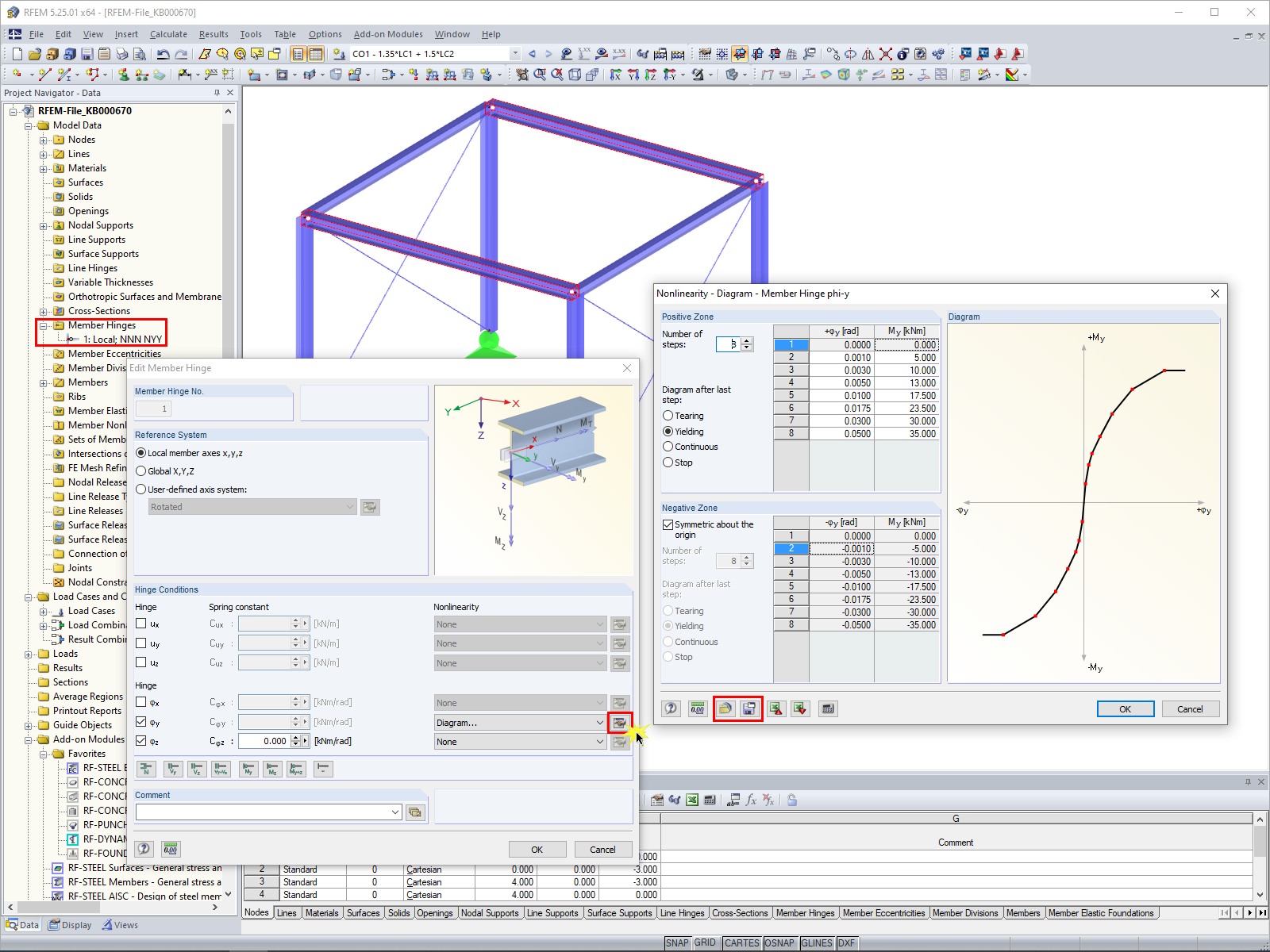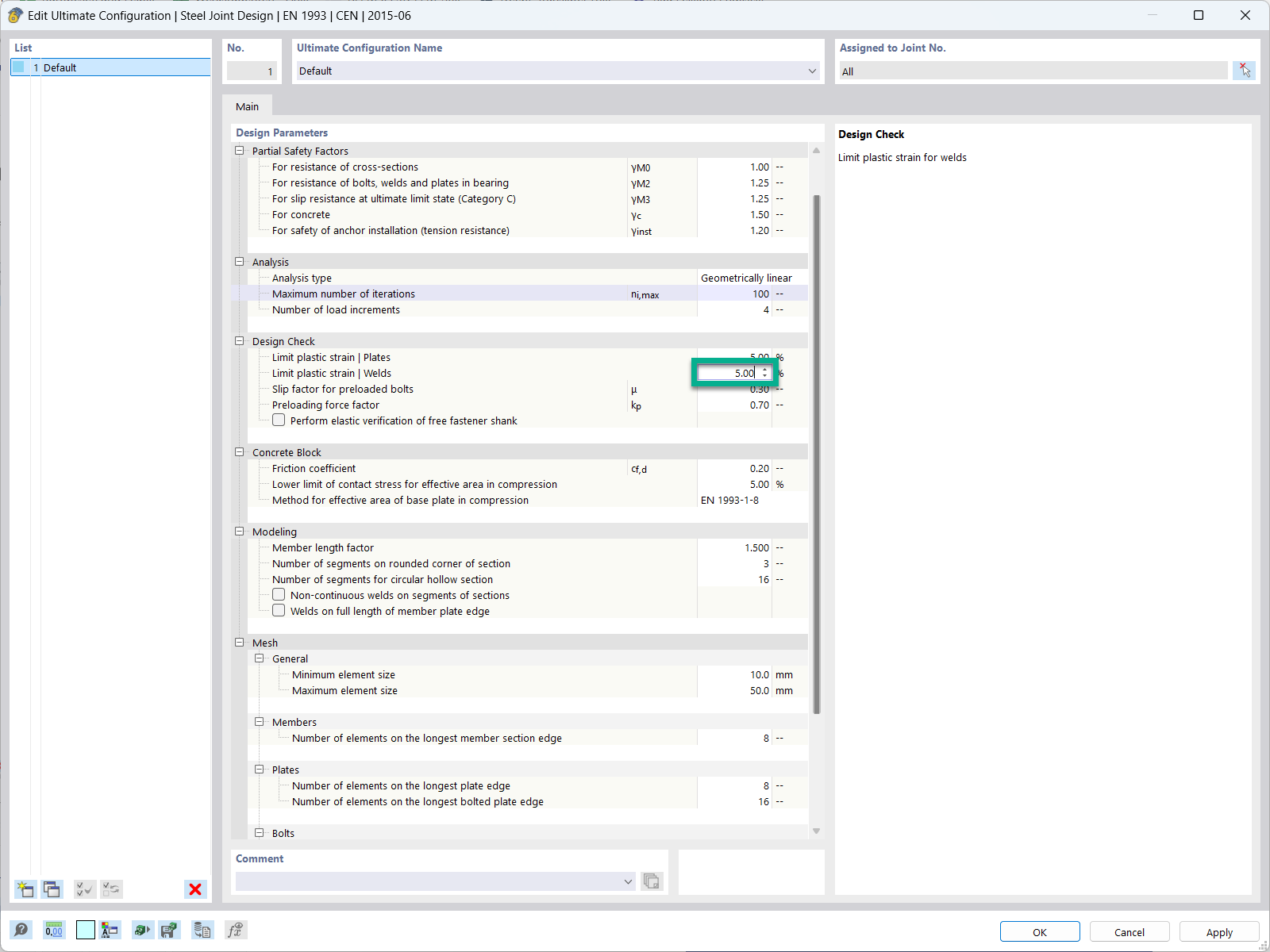Question:
When defining friction, there are two interaction relations. How do they differ? Should there not be an identical result when defining the same friction coefficients?
Answer:
The definition of the forces is specified in the corresponding dialog box (see Image 01). The maximum friction force depends on the load in the Y‑direction or Z‑direction. Depending on which interaction formula is used, different friction forces result.
Example
A support should transfer the force in the global X-direction by friction. The friction coefficient is 0.1 for all directions. The support force P-Y is 5 kN and the support force P-Z is 10 kN.
This results in the following maximum support force in the X-direction for the "Friction PY' PZ' ..." nonlinearity:
For the second option "Friction PY'+ PZ'...", the maximum support force results in:
While the resulting support force is used to determine the friction force in the first option, the forces are added linearly in the second option.
Thus, the structural system shown in Image 02 becomes unstable as of the force > 1.118 kN for the first option, and as of the force > 1.500 kN for the second option.



























































_1.jpg?mw=350&hash=ab2086621f4e50c8c8fb8f3c211a22bc246e0552)
